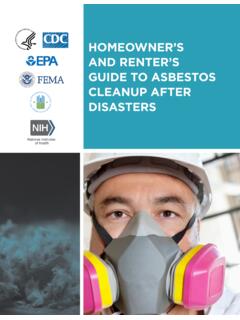Transcription of A GUIDE TO ANTI LIGATURE - Design in Mental Health
1 A GUIDE TOANTI LIGATUREE verything you need to know about anti - LIGATURE , from specialist products to official TO anti -LIGATURECONTOUR HEATING2 anti - LIGATURE RADIATOR AND RADIATOR COVER SPECIALISTSC ontour Heating explore the options and considerations when specifying anti - LIGATURE products for care and Mental Health TO anti -LIGATURECONTOUR HEATING3 Introduction04 The Statistics05 Official Guidance06 Risk Control07 Why Choose anti - LIGATURE ?08 Contours anti - LIGATURE Product Range10 anti - LIGATURE Radiator Covers10 anti - LIGATURE Radiators11 anti - LIGATURE HVAC & Perimeter Casings12 anti - LIGATURE Perimeter Heating13 anti - LIGATURE Ventilation Grille14 anti - LIGATURE TV Cabinet15 anti - LIGATURE Light Switch Cover16 Hygiene & Biocote17 About Contour18 Acknowledgements18 CONTENTSGUIDE TO anti -LIGATURECONTOUR HEATING4 INTRODUCTIONWhen planning the construction or refurbishment of a space within a Mental Health environment-or anywhere that occupies vulnerable individuals-it is essential that measures are put in place within the Design process to reduce LIGATURE s a sad fact that many suicides in Mental Health settings are directly attributed to hanging; a key statistic that we ll cover later in this eBook.
2 Who s This GUIDE For?Contour produces a range of innovative, safe surface temperature systems for healthcare, education, Mental Health , commercial and secure sectors, working in close partnership and collaborating with architects, M&E engineers, NHS Trusts, local authorities and contractors to deliver outstanding safe heating work within the Mental Health sector has led us to produce a new range of anti - LIGATURE products with the core aim of creating a safe environment for those most vulnerable. ABOUT USThis document is aimed to educate anyone involved in the Design and specification of a Mental Health setting, or any place that is occupied by vulnerable individuals at risk of suicide or self-harm. Individuals who are most involved in this process are clinicians, estates professionals and specifiers. It s important to understand the distinction between ligatures and LIGATURE points.
3 LIGATURE : Anything that binds or ties. Examples include chains, linen, clothing, cords, tubing, etc. LIGATURE point: Anything that could be used to attach or secure a LIGATURE . Examples include shower rails, coat hooks, water pipes, curtain rails, DEFINITIONSGUIDE TO anti -LIGATURECONTOUR HEATING5 THE STATISTICST here s a reason why anti - LIGATURE products have become a key consideration amongst clinicians, estates professionals and specifiers: the statistics speak for themselves. A national study - carried out in 2012 found that of the 448 suicides that occurred on psychiatric wards, 77% were by hanging, which suggests why there has been a rise in anti - LIGATURE solutions in recent same study highlighted that the common LIGATURE points and ligatures were doors, hooks/handles and belts or sheets/towels. The Care Quality Commission found that hanging accounted for 55% of male suicides and 42% of female suicides.
4 The report went on to advise providers to be aware of the LIGATURE risks in their premises, as hanging was the most common suicide method. SUICIDE RATES ARE FALLINGIn 2006, the National Confidential Inquiry into Suicide and Safety in Mental Health (NCISH) identified over 1,300 patient suicides a year. From 2006 to 2010, in-patient suicided dropped from 166-155 (31%). However, in the nine years since 2010, the reduction has become much more modest and has only fallen by 8%.These statistics have led to local authorities setting out guidance relating to the use of anti - LIGATURE products, which we shall now explore. GUIDE TO anti -LIGATURECONTOUR HEATING6 OFFICIAL GUIDANCEThe Care Quality Commission (2015) produced a GUIDE for their inspection teams that sets out how they should gather evidence and report their findings when assessing LIGATURE risks. They highlight that a risk posed by a LIGATURE point is greater if: It s in a private room that service users spend time in without direct supervision by s in an area/ward used by high-risk ward is designed poorly, with too few nurses on duty.
5 Policies from NHS trusts differ from area to area; however, the key elements are the same. In managing the risk of suicide and self-harm, many trusts suggest:A bi-annual risk assessment of LIGATURE points within Mental Health settings to identify:Structures or fittings which could be used in suicide or strangulationObstructions to observing high-risk patients Identifying potential ligaturesIdentifying other risks for self-harm or suicide in the environment This particular guidance has been taken from Northamptonshire Healthcare NHS Trust. ActionDescription/DefinitionRemoveIf the risk would leave the patients at risk, the LIGATURE should be removed and there is no suitable LIGATURE is removed and replaced with a purposely designed similar anti - LIGATURE piece of materials that hide the potential is a need to keep the risk because the potential injury is greater than the potential of an attempted suicide, for example, grab rails within an elderly in-patient/dementia Ligatures & LIGATURE PointsPotential Risk ControlBedsteadsShould be appropriate to the environmentBrackets, picture rails, ventilation grilles, ductsBrackets: remove, box in or chase into wall Grilles.
6 Perforations should be a maximum of 3mm in HookRemove all hooks behind doors, in wardrobes, RailsCollapsible rails and safety trackCurtain TrackingAvoid gaps in fixed tracking Curtain WiresAvoid use of curtain wiresDoors (frames, handles)Careful consideration of designElectrical WiringShould be chased into wall or fitted flush to wallExposed PipeworkConsider height and accessibilityHingesConsider types of hinges and gaps between doors and f ramesLight Switch CordsShould not be nylon. Consider solid pull cords or inf ramed automatic switches. Consider anti - LIGATURE switch coversPatient s lockers/wardrobesRemove hanging railsRadiatorsConsider boxing in with appropriate coversWardrobesConsider Design (handles, internal hooks, door closing etc.)Window & Window OpeningConsider handles, trickle vents, hingesWindow & Door Weatherproof SealsConsider LIGATURE pointsSink Taps, PlugsConsider LIGATURE pointsGUIDE TO anti -LIGATURECONTOUR HEATING7 RISK CONTROLIt s extremely difficult, and in some cases impossible, to completely remove LIGATURE risks.
7 Doing so may serve as a hindrance for employees carrying out necessary tasks, and for service users by taking away their rights of independence. In managing risks, it s recommended that you take a remove, replace, protect, or manage approach, as highlighted by The Nottinghamshire Healthcare NHS LIGATURE Risk Reduction Policy (2019).*Table from Nottinghamshire Healthcare NHS LIGATURE Risk Reduction PolicyGUIDE TO anti -LIGATURECONTOUR HEATING8 anti - LIGATURE products follow certain characteristics: Smaller perforation holes for products that require ventilation. Minimal gaps on joints (If wall-secured) minimal gaps between product and wall Bullnose, rounded corners Full perimeter casingBelow are some further reasons why you should choose anti - LIGATURE CHOSE anti -LIGATUREThey Could Minimise Self-Harm And SuicideWe ll start with the most obvious one.
8 To repeat my previous statistic, approximately three-quarters of patients who die by suicide on psychiatric wards do so by hanging or strangulation. A national study carried out by the University of Manchester suggested increased awareness of the methods used by these patients may benefit from prevention strategies in Mental Health Likely To Be Stronger When patients are seeking to self-harm, they don t just look for the obvious LIGATURE points. Quite often, furniture in Mental Health settings is subject to vandalism. Once vandalised, Service Users could use the damaged furniture as a weapon or LIGATURE point. When designing anti - LIGATURE products, manufacturers recognise that furniture in Mental Health settings is vulnerable to damage, urging them to create products that are stronger and more robust than their standard counterparts. 2 They Can Improve A Room s Aesthetics When designing a Mental Health setting, creating a calming atmosphere where Service Users feel comfortable and relaxed is of great importance.
9 When specifying products, the Design and look of a room can impact on a patient s well-being. anti - LIGATURE products can modernise any space, and they come in a range of colours to complement the room TO anti -LIGATURECONTOUR HEATING9 Anchor Points Below HeadMany assume that the risk of suicide comes from LIGATURE points above head-height. However, studies have found that many suicides have taken place where the LIGATURE anchor point has been below head or even waist height. At Contour we identify LIGATURE points at floorlevel to be a we hear the term hanging we often look to the ceiling to identify the potential hazards, but this certainly isn t the case. anti - LIGATURE products such as radiators, TV cabinets, and light switch covers may all be located below head-height, so the radiator you choose is just as important as the curtain Cost In The Long TermEach year, Mental Health settings spend thousands of pounds on replacing damaged items due to the frequent vandalism that occurs.
10 Consider the longevity you ll gain from opting for an anti - LIGATURE product that is both robust and damage-limiting. The money saved through not having to frequently replace damaged furniture could be used to improve the facility in ways that enhance the experience of the Service User, positively impacting on their recovery Products Aren t Linked To Mental HealthWhilst the features of anti - LIGATURE products are closely aligned to the needs of a Mental Health setting, we supply anti - LIGATURE products to a range of different establishments. There s a need for anti - LIGATURE products in SEN schools, elderly care homes, hospitals and police units, to name a few. This is due to the vulnerable nature of the individuals requiring a level of care. It s important to note, too, that many individuals who ve attempted suicide are frequently taken to a general hospital first for immediate care, prompting all healthcare facilities to consider their LIGATURE prevention TO anti -LIGATURECONTOUR HEATING10 Contour has developed a specialist range of solutions for use in secure environments such as NHS or private Mental Health facilities, prisons and other secure custody services.



